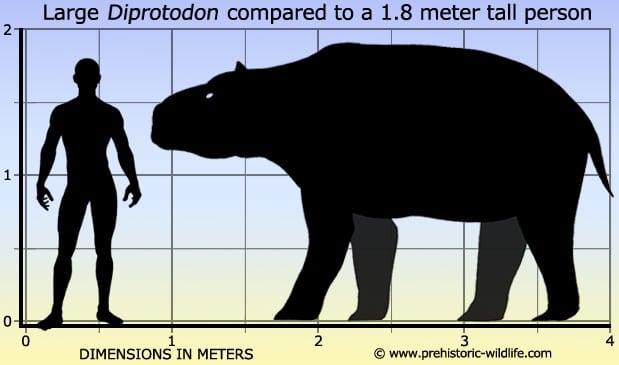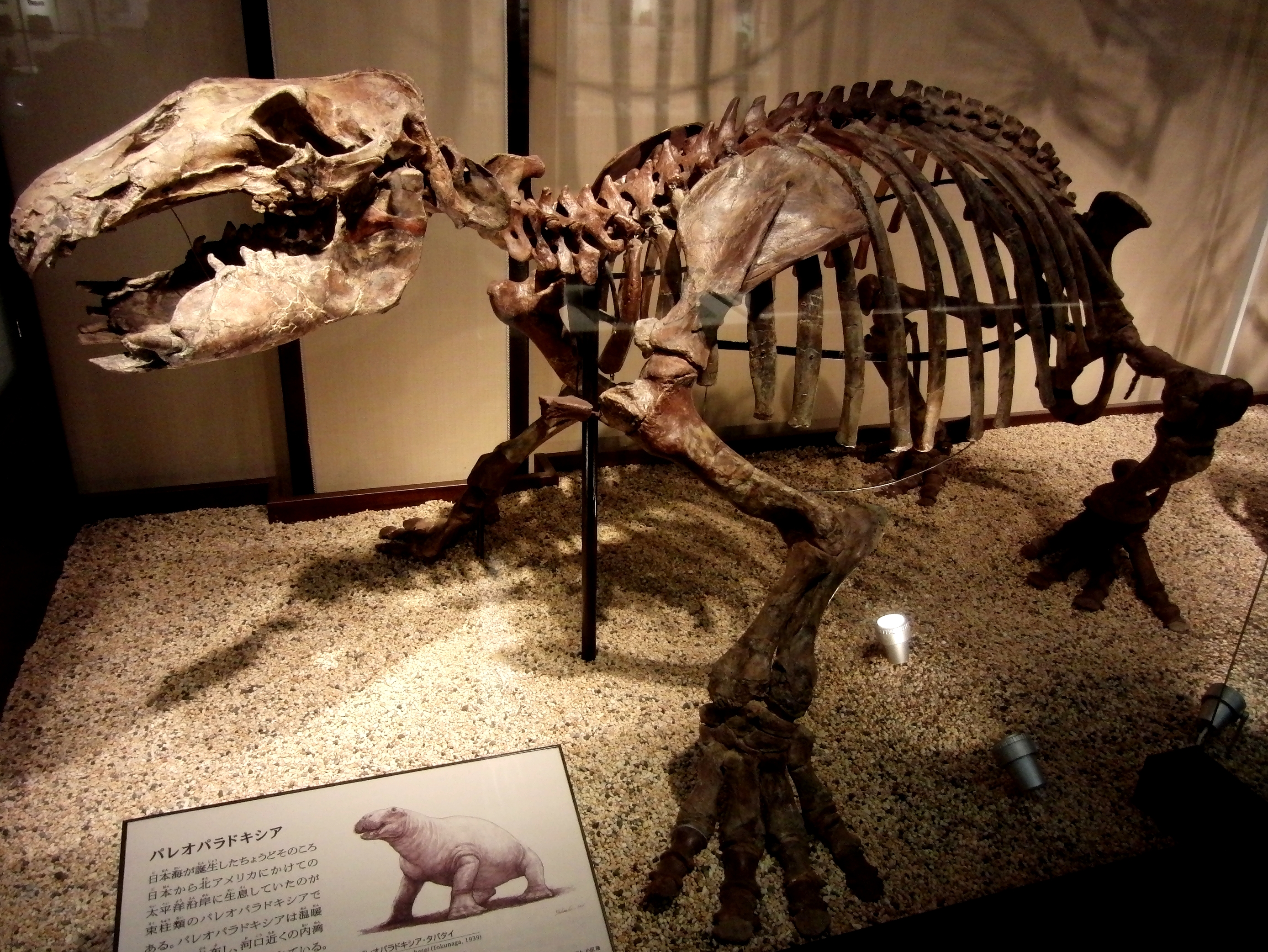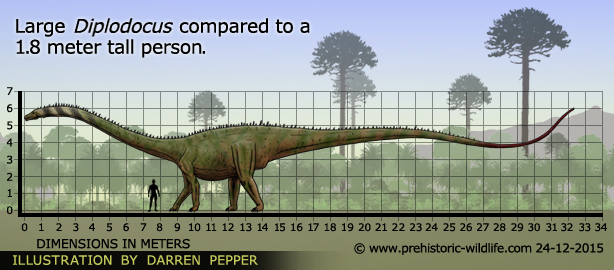|
|
Post by Joey12 on Jun 27, 2021 23:03:47 GMT
Moeritherium reminds me of a pig with a longer nose.
Ornimegalonyx looks like some of our big owls but with longer legs.
Pyrotherium I'm thinking Hippo too but with a smaller mouth.
|
|
|
|
Post by Talira Greycrest on Jun 28, 2021 8:15:12 GMT
This tiny mammal resembles the modern Elephant shrew: Name: LeptictidiumPronunciation: Lep-tik-tid-e-um.Meaning of name: "Graceful weasel"Species: L. auderiense, L. storchi, L. nasutum, L. prouti, L. tobieni, L. listeri, L. ginsburgi, L. sigeiSize: Depending on species, measured between 60 and 90cm long, 20cm tall and weighing 2kgs.Family: Pseudorhyncocyonidae.Diet: OmnivoreFirst fossils found: Known from several specimens including some complete skeletons. L. auderiense named by Heinz Tobien in 1962. L. nasutum named in 1985. L. tobieni named in 1987. L. ginsburgi and L. sigei named in 1989. L. storchi, L. prouti and L. listeri named in 2013.Lived: Depending on species, lived between 50 and 35 million years ago from the Ypresian stage of the Early Eocene through to the Priabonian stage of the Late Eocene throughout what is now Europe, particularly in what is now France and Germany. |
|
Tix Mascot
Tech guru
Italy is my second homeland
Posts: 11,093  Mini-Profile Background: {"image":"http://4.bp.blogspot.com/-X5mhw13BJ7Y/TwKeZ3uM7YI/AAAAAAAABPw/D82go4Ny_8E/s1600/italy-background-8-787281.jpg","color":""}
Mini-Profile Text Color: 0ef8f1
Mini-Profile Name Color: f40d39
Year of Birth: 1961
Nationality: Norwegian
Mini-Profile Background: {"image":"http://4.bp.blogspot.com/-X5mhw13BJ7Y/TwKeZ3uM7YI/AAAAAAAABPw/D82go4Ny_8E/s1600/italy-background-8-787281.jpg","color":""}
Mini-Profile Text Color: 0ef8f1
Mini-Profile Name Color: f40d39
Year of Birth: 1961
Nationality: Norwegian
|
Post by Tix Mascot on Jun 28, 2021 16:46:39 GMT
First glance view: A rodent-kangaroo hybrid of sorts.
|
|
|
|
Post by Talira Greycrest on Jun 29, 2021 6:42:01 GMT
An early bat: Name: WitwatiaPronunciation: Wit-wat-e-ahMeaning of name: "Large flapping wings"Species: W. schlosseri, W. eremicus, W. sigeiWingspan: Uncertain, but is estimated to have measured between 60 and 80cm.Family: Philisidae.Diet: Uncertain. Likely insectivore.First fossils found: Known only from teeth and a few lower jaws discovered in Egypt and Tunisia. W. schlosseri and W. eremicus named by Gregg F. Gunnell, Elwyn L. Simons and Erik R. Seiffert in 2008. W. sigei named in 2012.Lived: Depending on species, lived between 55.8 and 33.9 million years ago from the Ypresian stage of the Early Eocene through to the Priabonian stage of the Late Eocene in what is now North Africa. Artist's impression of Witwatia. Artist's impression of Witwatia. |
|
|
|
Post by Joey12 on Jun 29, 2021 7:41:52 GMT
Now those I like.
|
|
Tix Mascot
Tech guru
Italy is my second homeland
Posts: 11,093  Mini-Profile Background: {"image":"http://4.bp.blogspot.com/-X5mhw13BJ7Y/TwKeZ3uM7YI/AAAAAAAABPw/D82go4Ny_8E/s1600/italy-background-8-787281.jpg","color":""}
Mini-Profile Text Color: 0ef8f1
Mini-Profile Name Color: f40d39
Year of Birth: 1961
Nationality: Norwegian
Mini-Profile Background: {"image":"http://4.bp.blogspot.com/-X5mhw13BJ7Y/TwKeZ3uM7YI/AAAAAAAABPw/D82go4Ny_8E/s1600/italy-background-8-787281.jpg","color":""}
Mini-Profile Text Color: 0ef8f1
Mini-Profile Name Color: f40d39
Year of Birth: 1961
Nationality: Norwegian
|
Post by Tix Mascot on Jun 29, 2021 11:58:17 GMT
Not too different from modern bats.
|
|
|
|
Post by Joey12 on Jun 30, 2021 7:22:42 GMT
Probably either ate fruit of insects.
|
|
|
|
Post by Talira Greycrest on Jun 30, 2021 10:08:41 GMT
Here's a giant relative of modern wombats and koalas: Name: DiprotodonPronunciation: Di-pro-toe-donMeaning of name: "Two forward teeth".Species: D. optatum, D. australis, D. minor, D. annextans, D. longiceps, D. bennettii, D. loderi Size: Depending on species, measured up to 3 metres long, 2 metres tall and weighing up to 2.7 metric tonnes.Family: Diprotodontidae.Diet: Herbivore. Fed on low-growing vegetation.First fossils found: Known from hundreds of skeletons as well as footprints and hair impressions. First discovered by George Ranken and Sir Thomas Livingstone Mitchell in New South Wales, Australia, during the early 1830s. D. optatum named by English palaeontologist, Sir Richard Owen, in 1838. D. australis named in 1844. D. annextans named in 1861. D. minor named in 1862. D. longiceps named in 1865. D. bennettii and D. loderi named in 1873.Lived: Depending on species, lived between 1.6 million years and 44,000 years ago from the Calabrian stage of the Middle Pleistocene through to the Tarantian stage of the Late Pleistocene in what is now eastern Australia.
 |
|
|
|
Post by Joey12 on Jun 30, 2021 10:18:20 GMT
Not sure what I think this one looks like.
|
|
|
|
Post by Talira Greycrest on Jun 30, 2021 12:03:58 GMT
Not sure what I think this one looks like. To me, it looks like a giant, hippo-sized wombat. |
|
Tix Mascot
Tech guru
Italy is my second homeland
Posts: 11,093  Mini-Profile Background: {"image":"http://4.bp.blogspot.com/-X5mhw13BJ7Y/TwKeZ3uM7YI/AAAAAAAABPw/D82go4Ny_8E/s1600/italy-background-8-787281.jpg","color":""}
Mini-Profile Text Color: 0ef8f1
Mini-Profile Name Color: f40d39
Year of Birth: 1961
Nationality: Norwegian
Mini-Profile Background: {"image":"http://4.bp.blogspot.com/-X5mhw13BJ7Y/TwKeZ3uM7YI/AAAAAAAABPw/D82go4Ny_8E/s1600/italy-background-8-787281.jpg","color":""}
Mini-Profile Text Color: 0ef8f1
Mini-Profile Name Color: f40d39
Year of Birth: 1961
Nationality: Norwegian
|
Post by Tix Mascot on Jun 30, 2021 18:24:45 GMT
Some of them could actually pass for juvenile versions of something existing today.
|
|
|
|
Post by Joey12 on Jul 1, 2021 2:56:13 GMT
Hmm maybe an early bear.
|
|
|
|
Post by Talira Greycrest on Jul 1, 2021 8:29:56 GMT
Name: PalaeoparadoxiaPronunciation: Pay-le-o-pah-rah-dox-e-ahMeaning of name: "Ancient puzzle"Species: P. tabatai, P. mediaSize: Between 2 and 2.5 metres long and weighed 1 metric tonne.Family: Palaeoparadoxiidae.Diet: HerbivoreFirst fossils found: Known from several specimens discovered in Mexico, Japan and the western United States. P. tabatai originally named Cornwallius by Shigeyasu Tokunaga in 1939 before being re-named by Roy Herbert Reinhart in 1959. P. media named by Norihisa Inuzuka in 2005.Lived: Depending on species, lived between 20 and 10 million years ago from the Burdigalian stage of the Early Miocene through to the Tortonian stage of the Late Miocene in what is now Mexico, Japan and the western United States.

|
|
Tix Mascot
Tech guru
Italy is my second homeland
Posts: 11,093  Mini-Profile Background: {"image":"http://4.bp.blogspot.com/-X5mhw13BJ7Y/TwKeZ3uM7YI/AAAAAAAABPw/D82go4Ny_8E/s1600/italy-background-8-787281.jpg","color":""}
Mini-Profile Text Color: 0ef8f1
Mini-Profile Name Color: f40d39
Year of Birth: 1961
Nationality: Norwegian
Mini-Profile Background: {"image":"http://4.bp.blogspot.com/-X5mhw13BJ7Y/TwKeZ3uM7YI/AAAAAAAABPw/D82go4Ny_8E/s1600/italy-background-8-787281.jpg","color":""}
Mini-Profile Text Color: 0ef8f1
Mini-Profile Name Color: f40d39
Year of Birth: 1961
Nationality: Norwegian
|
Post by Tix Mascot on Jul 1, 2021 15:20:15 GMT
Is that drawing at the bottom how they think it looked like? BTW, has Dino from the Flintstones been attributed to a certain species (even if highly modified) or is it just a figment of the creators' fantasy?  |
|
|
|
Post by Joey12 on Jul 2, 2021 0:34:29 GMT
It's a Snorkasaurus that doesn't really exist. It was modeled after a Diplodocus that is real. But Dino must have been a baby one.  |
|